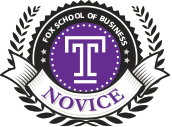Workflow Analysis Sample
Department of Cardiology
Hospital XYZ Washington Square
September 2014
Scope: Operations conducted a workflow analysis of the front desk at Cardiology Hospital XYZ Washington Square at the request of Dr. Daniel Kelly.
Methodology:
- Meetings and observations with PSRs front desk staff: 4 FTE
PSR Observations:
Kiosks-The check-in kiosks are viewed as more of a sign-in sheet.
- Patients are unaware of the kiosk. There is little signage. When the front desk is not fully staffed, there is no one to greet the patients or show them how to use the kiosk.
- When a patient checks-in on a kiosk, they appear as “present” in Epic not “arrived.”
- If the patient does not see an error on the kiosk, they will sit down to wait. The PSR will then find the “present” patient and manually check them in.
- If there is an error in the registration or the patient has a copay, the PSR must call the patient to the front to proceed with check-in.
- Kiosks are unable to check-in new patient appointments. If a new patient attempts to check-in at the kiosk, the kiosk will indicate that they must go to the front desk. The kiosk does not indicate that they must exit out of that notification. The PSRs are unable to check-in without exiting the screen on the kiosk. In turn, the PSRs must physically go to the kiosk and exit to begin check-in on their computer.
- Patients with two appointments scheduled are not checked-in for both appointments. Physicians come up to the front desk to ask PSRs to arrive the second appointment.
Call abandonment– On a fully staffed day, there are four PSRs for check-in/checkout and answering phone calls. There is one PSR strictly answering phone calls in the back. During lunch time, there are only a maximum of three PSRs to handle all of the responsibilities. The patient physically in front of the PSR takes priority over the phone calls. Phone calls either go unanswered or patients are put on hold for at most 5 minutes and 45 seconds and frequently hang up.
- Patients often wait at the PSRs’ desks while the PSR is handling patient phone calls. This could be considered a violation of HIPAA.
Pre-certifications– There are two PSRs that sit at the front desk who are responsible for obtaining CT scan and MRI pre-certs for patients who prefer to have their scans performed external to UPHS. Internal pre-certs are taken care of by the hospital’s pre-cert team.
- PSRs are on the phone with insurance companies for extended amounts of time. They are unable to efficiently and effectively check patients in and out during this time. This also increases the amount of calls in the remaining PSRs’ queues.
- PSRs receive call backs for peer-to-peer reviews on their central line. The PSR then must leave their desk to see if the doctor is available to take the phone call. PSRs have expressed that this has become more frequent after the hospital started handling internal pre-certs.
PSR Recommendations:
It is recommended that the PSRs establish work queues in Epic in order to ensure the registration is correct and complete. This will help patient flow at the kiosk.
- Having signage to direct patients to the kiosk and the patient type that it is most conducive for (NPV vs. RPV) would help alleviate duplicate work for both the PSR and the patient.
- If there is an error on the kiosk, patients need to be instructed to exit out of the notification.
- It is imperative to have a check-in PSR at the front of the office to help alleviate confusion regarding where to check-in and how to use the kiosk, if appropriate.
Call abandonment– Patient flow does not appear to be overwhelming for the PSRs. To enhance the patient experience in person and over a phone call, another PSR solely designated to answer phone calls will benefit the patient experience and employee morale. A reallocation of the PSRs to have 3 PSRs at the front desk and 2 PSRs in the back answering phone calls would prove beneficial to the work flow.
Pre-certifications– It is recommended that an employee in a non-patient interaction position is responsible for obtaining pre-certs. These employees are better equipped to manage their schedule and incorporate the necessary time that obtaining pre-certs involves.
- If assigning these duties to a non-PSR is not feasible, then it is advised to have one PSR at a time be excused from the desk in order to begin their pre-cert process. At an assigned time, the PSR would return to the front desk and another PSR could begin their pre-cert work in an interruption-free space.
Thank you for the opportunity to conduct this review. It has been a pleasure working with the Cardiology team.
Karen Furtek
Scheduling Consultant, Operations

